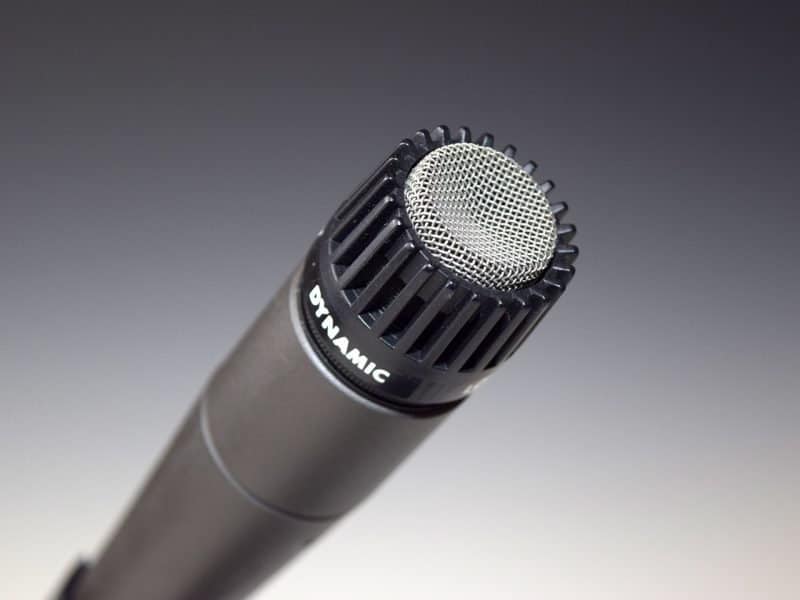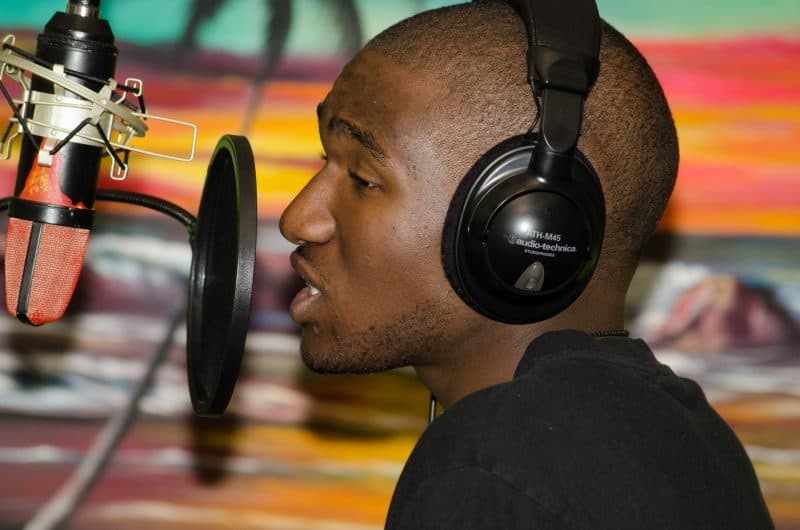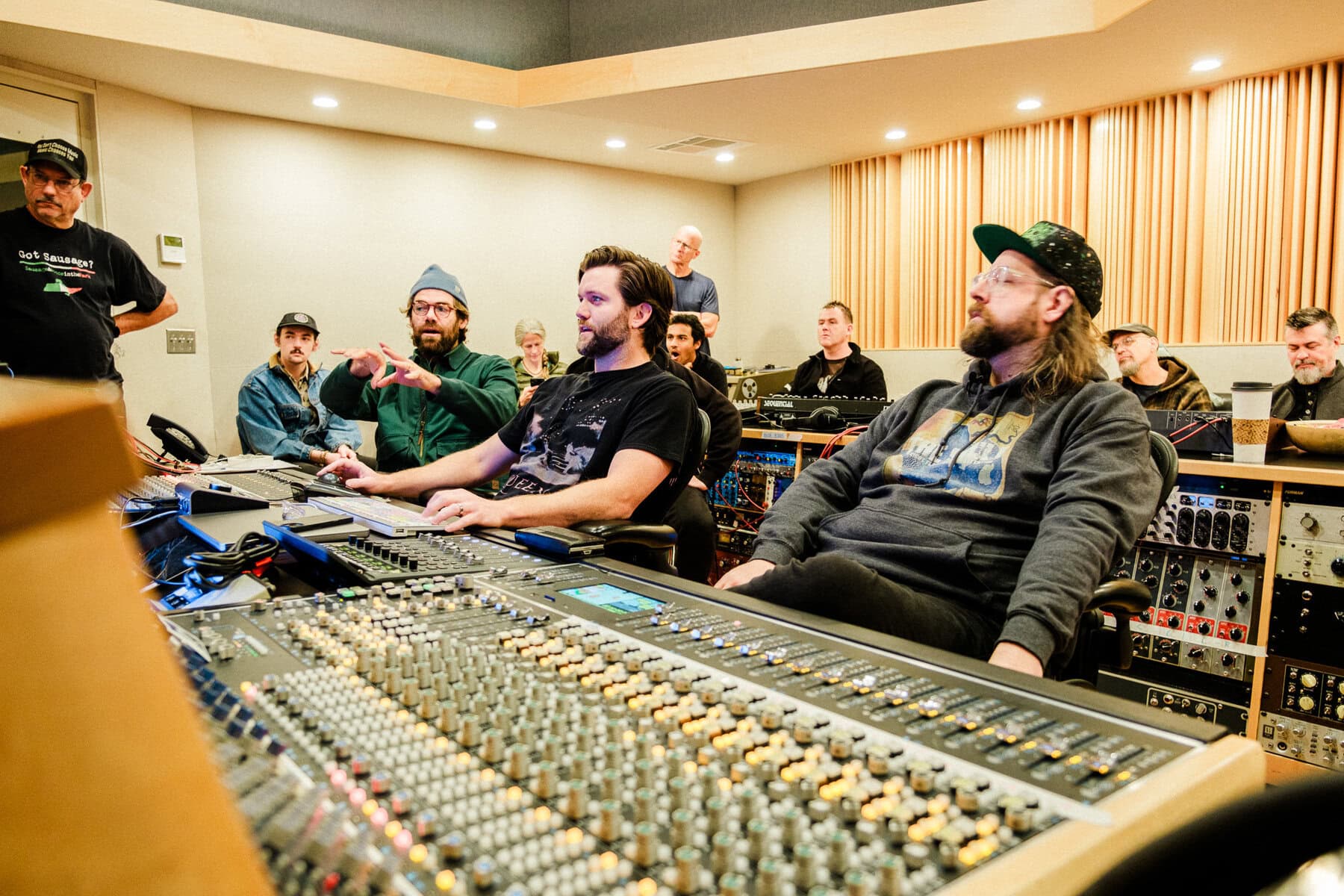Using the right microphone for the job is vital if you want your music to sound radio-ready.
But choosing a microphone can be confusing. Especially when it’s your first time recording.
So, what are all these different types of recording microphones, and which is right for you?
By the end of this article, you’ll know the ins and outs of the three types of microphones, and when to use them.
I’m guessing you’re here because you want to make your mixes sound professional. Well, you don’t need expensive gear or software to do that – you just need the right knowledge. We put together a brief training that covers a totally new approach to music production. Until now, everyone has been teaching production totally backward. Just click below to watch. Get industry-quality every time (steal this framework)
But if you just want to learn about microphones specifically, keep reading.
What Are the Three Different Types of Studio Mics?
There are three main microphone types:
- Dynamic Mics
- Condenser Mics
- and Ribbon Mics
Each microphone has its own unique sound and strengths. When paired with the right instrument, it can make it sound better than even the real thing.
On the other hand, each mic can just as easily sound terrible if used incorrectly.
So let’s learn what each mic can and can’t do, shall we? Let’s start with the granddaddy of them all… the dynamic microphone.
NOTE: Wish you could test out some microphones before buying? Watch this:
Dynamic Mics

Dynamic mics, like the Shure SM57 or the Sennheiser MD 421-II, are the workhorse mics of the studio.
Dynamics are tough mics. They can get hit by drumsticks, dropped on stage, and even survive a fall from a helicopter – twice.
They can take the wear and tear of a home studio – and then some.
Dynamic microphones aren’t particularly sensitive, which makes them perfect for loud sources. This is why you often see them on snare drums and guitar amps.
Because they’re insensitive, they’re very versatile. Dynamic mics are used on all kinds of sounds in the studio.
And because they’re usually the cheapest of the mic types, they’re also easiest to stock up on.
Dynamic microphones have a unidirectional pattern (otherwise known as a cardioid pattern – because it looks like a heart). This means that the mic picks up sound in the direction it is being pointed, and cancels out any sound coming from behind it.

This type of polar pattern is great for home recording studios where the room is your worst enemy. You can strategically place your recording microphones to point away from reverberant parts of your room. It’s a great way to compensate for being in a bedroom or living room.
Dynamic mics are often used on instruments with a lot of low-mid energy. They have a presence boost in the high mids to compensate for that.
Most dynamics also have a roll-off in the bass, so they’re not great to use on low end instruments (such as the kick or bass). But there are special low-end dynamic mics with a bass bump that are actually meant for low end instruments (like the AKG D112 MKII or the EV RE-20).

Make sure to stick with these if you’re going to be miking bass instruments.
Dynamics are great mics to use on almost everything. Be aware though that the sound will not be as accurate or “pretty” as a condenser mic. Dynamics tend to make instruments sound warmer and more aggressive.
We’ll go over what instruments use dynamic mics below. But first….
Condenser Mics

Condenser microphones are the rich, frilly cousins of dynamics.
They’re more complicated than their dynamic counterparts, so they’re more fragile and expensive (though they have gotten much, much cheaper than they were in the past).
That said, condenser microphones are much clearer in comparison to dynamics. They are more balanced, accurate, and “sweeter” than their powerful counterparts. They’re also much more sensitive, which makes them perfect for softer and brighter sounds.
As a studio microphone, they’re very powerful.
Condensers can’t be used on quite as many sound sources as dynamics. The ones they can be used on, though, sound much better because of them. Condensers pride themselves on being able to make sounds even better than they were before.
Because of their top-end bump, condensers give extra “air” to what they pick up, making them sound less muffled than a dynamic would.
They also have more polar patterns than a dynamic would, making them more versatile for creative miking techniques. Many condenser mics have switches that change their patterns between:
Unidirectional (or cardioid), which you saw above…

Bidirectional, which picks up sound from the front AND the back, while canceling out sounds on the sides…

And Omnidirectional, which picks up sound from all over, canceling nothing.

These help to make condensers a versatile mic in their own right.
There are two different types of condenser microphones, which can be swapped out depending on the instruments.
The first is the Large Diaphragm Condenser (like the Audio Technica AT2035 and the se2200). These pick up more lows and low mids, but a little less of the highs. These are great on full-bodied instruments.

And there is the Small Diaphragm Condenser (like the Rode NT5 or the Shure SM81). These pick up less lows and low mids, but add a lot to the top end. These are also known as pencil condensers. They’re better for capturing brighter instruments.

Both would be a great addition to your mic collection! All in all, condensers are great mics for home studio recording.
An important note about condensers: make sure you’re using an audio interface that can supply power to a microphone. Condensers need 48V of power to work. This is known as “Phantom Power.” Most interfaces have this option, but it’s worth double checking before making any big purchases.
Ribbon Mics
Ribbon mics are the black sheep of the family.

These microphones were very popular in the 50’s and 60’s, before dynamic and condenser mics came onto the scene.
As such, they’re very fragile and very expensive.
But few mics can produce the warmness and vintage “vibe” that these can.
These are the most sensitive mics around, so they’re meant to be used on softer sounds, like voice or strings.
Ribbon mics are also always bidirectional. So they’re better used in a room that is well treated to lower the amount of room sound that is captured.

A few popular examples of ribbon mics are the Cascade Fathead and the Royer R-121.
These are great additions to your mic collection, but shouldn’t be purchased until you’ve gotten the hang of dynamics and condensers. Or, depending on your genre, shouldn’t be purchased at all.
For a home studio, I wouldn’t stress over quickly picking up one of these.
Which Microphones Should You Use?
Now that you know the different types of mics, which should you use, and on what instruments?
Use the handy filter system below to select which specific instruments you have questions about.
Let’s dive in.
Which instruments do you want a microphone for?
The Best Mics for Vocals
 When recording vocals, you could use all three mic types - it entirely depends on the vocalist and the song!
When recording vocals, you could use all three mic types - it entirely depends on the vocalist and the song!
Microphones for Acoustic Guitar Recording
 Acoustic guitars tend to be brighter and more percussive. Small diaphragm condensers usually work best on these.
If you are trying to create an old folk sound, a ribbon mic or dynamic mic would do wonders as well.
Acoustic guitars tend to be brighter and more percussive. Small diaphragm condensers usually work best on these.
If you are trying to create an old folk sound, a ribbon mic or dynamic mic would do wonders as well. Best Electric Guitar Mics
 Recording guitar that sounds great can be tricky. But mic choice is pretty easy!
There are exceptions to this rule, but usually guitar amps are the realm of the dynamic mics. These things are loud, intense, and have very little high frequency content for a condenser to pick up.
Stick with a classic SM57 and you’ll be fine.
Recording guitar that sounds great can be tricky. But mic choice is pretty easy!
There are exceptions to this rule, but usually guitar amps are the realm of the dynamic mics. These things are loud, intense, and have very little high frequency content for a condenser to pick up.
Stick with a classic SM57 and you’ll be fine. Recording Piano That Sounds Great
 The kind of microphone you use for a piano depends on the genre and the tone.
Recording a punchy upright for a rock song? A pair of dynamic mics would work fine.
Recording a smooth grand piano for a ballad? A pair of condensers is your best friend. Whether you want them to be small or large diaphragm depends on how bassy or bright you want the piano to sound.
If you can’t figure out which to use, the rule of thumb for pianos is to lean on the side of condensers.
The kind of microphone you use for a piano depends on the genre and the tone.
Recording a punchy upright for a rock song? A pair of dynamic mics would work fine.
Recording a smooth grand piano for a ballad? A pair of condensers is your best friend. Whether you want them to be small or large diaphragm depends on how bassy or bright you want the piano to sound.
If you can’t figure out which to use, the rule of thumb for pianos is to lean on the side of condensers. Recording Strings
 These are usually either condenser microphones or ribbon microphones, depending on the sound you are going for.
Condenser mics will create a more accurate depiction of the string tone. Ribbon mics, however, will add warmth and extra character to the sound at the expense of accuracy.
If you were to use a condenser, the size would depend on what you were recording. Violin will almost always be a small diaphragm condenser. Cello will usually be a large diaphragm.
If you are recording an entire string section, it’s best to stick with a pair of large diaphragm condensers. You'll be able to capture a much larger part of the frequency spectrum.
These are usually either condenser microphones or ribbon microphones, depending on the sound you are going for.
Condenser mics will create a more accurate depiction of the string tone. Ribbon mics, however, will add warmth and extra character to the sound at the expense of accuracy.
If you were to use a condenser, the size would depend on what you were recording. Violin will almost always be a small diaphragm condenser. Cello will usually be a large diaphragm.
If you are recording an entire string section, it’s best to stick with a pair of large diaphragm condensers. You'll be able to capture a much larger part of the frequency spectrum. Types of Microphones for Drums
 Drum kits are... complicated.
Drum kits are... complicated.
The Best Mics for Bass
 Bass amps are recorded using low-end dynamic mics. These mics are designed to handle the low frequencies coming from the cabinet.
An upright bass is more complicated. How present will it be in the mix? How much detail do you need to capture? I will usually use a combination of a low-end dynamic mic and a large diaphragm condenser to see which tone I like best.
Bass amps are recorded using low-end dynamic mics. These mics are designed to handle the low frequencies coming from the cabinet.
An upright bass is more complicated. How present will it be in the mix? How much detail do you need to capture? I will usually use a combination of a low-end dynamic mic and a large diaphragm condenser to see which tone I like best.
Conclusion: Microphone Types
So, now you know how to choose the right mic for the job.
Choosing the right mic is a huge step towards getting a recording that’s both good quality, and the right tone.
If you want to dig deeper into music production and learn what it actually takes to make mixes that sound pro… And you’re an intermediate or advanced producer… Be sure to check out the free masterclass: Enjoy!Next Steps











